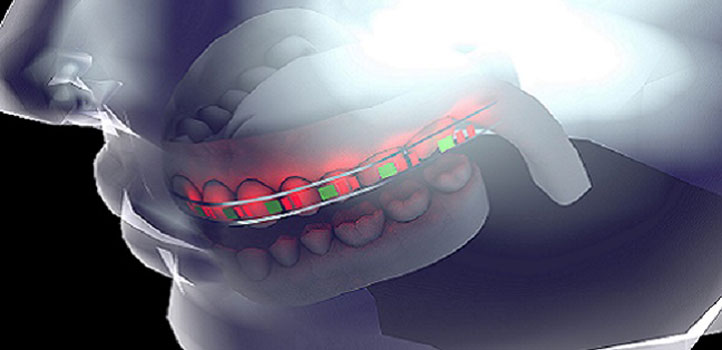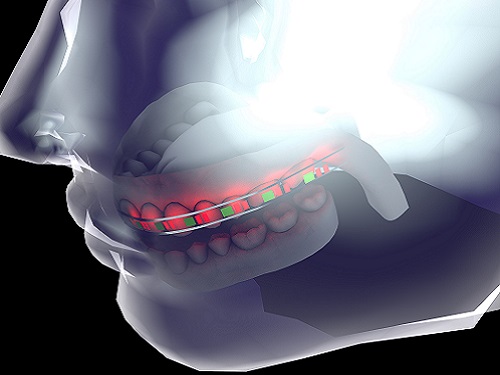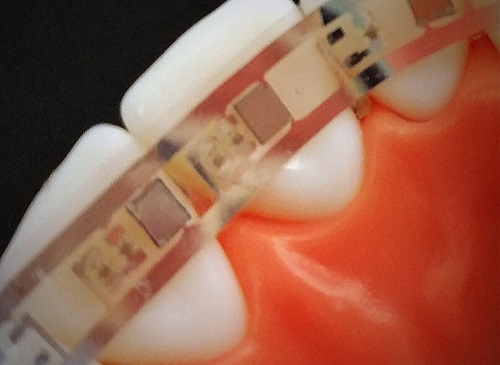Electrical Engineering
Flexible batteries a highlight for smart dental aids
Redesigned lithium-ion batteries could help improve the efficiency of orthodontic devices.


Flexible lithium batteries have been incorporated into dental braces as part of efforts to increase the efficiency of corrective orthodontics.
© 2017 KAUST

Each tooth has its own near-infrared LEDs to provide localized light therapy.
© 2017 KAUST
Smart 3D-printed braces that incorporate nontoxic batteries and lights could reduce the time and costs involved in realigning and straightening teeth.
The orthodontic system, conceptualized by researchers at KAUST, involves placing two near-infrared light-emitting diodes (LEDs) and one lithium-ion battery on every tooth in a semitransparent, 3D-printed dental brace.
The batteries provide energy to turn the near-infrared LEDs on and off, depending on how they are programmed by a dentist, to provide localized light therapy according to the needs of each tooth. Phototherapy enhances bone regeneration and can reduce the time and costs involved in corrective orthodontics. The brace would be removable to allow the batteries to be recharged.
“We started embedding flexible LEDs inside 3D-printed braces, but they needed a reliable power supply,” explains Muhammad Hussain who led the study together with PhD student Arwa Kutbee. “After the incidents with the Samsung Galaxy 7 batteries exploding, we realized that traditional batteries in their current form and encapsulation don’t serve our purpose. So we redesigned the state-of-the-art lithium-ion battery technology into a flexible battery, followed by biosafe encapsulation within the braces to make a smart dental brace.”
The battery was redesigned using a dry-etching technique, which removes the silicon substrate normally found on its back. This process thinned the battery to 2.25mm x 1.7mm and made it flexible. Tests showed that the volumetric energy—the ratio of energy to device size—of the redesigned batteries remained high even after many cycles of continuous operation.
Batteries were then encapsulated in biocompatible soft polymeric materials to prevent the possibility of leakage, making them safe to place in the mouth. As a testament to their biocompatibility, when human embryonic kidney cells were cultured on these batteries over a period of days, they thrived and proliferated. The batteries’ electrochemical performance increased linearly with rising temperature, up to 90°C, making them stable.
Hussain says the system is a preliminary prototype, “which is more than a proof of concept.” The next step, he says, is to conduct clinical trials.
References
-
Kutbee, A. T., Bahabry, R. R., Alamoudi, K. O., Ghoneim, M. T., Cordero, M. D…& Hussain, M. M. Flexible and biocompatible high performance solid-state micro-battery for implantable orthodontic system. npj Flexible Electronics 1, article 7 (2017).| article
You might also like

Bioengineering
Smart patch detects allergies before symptoms strike

Computer Science
Green quantum computing takes to the skies

Electrical Engineering
Micro-LEDs boost random number generation

Bioengineering
Sensing stress to keep plants safe

Computer Science
Sweat-sniffing sensor could make workouts smarter

Electrical Engineering
New tech detects dehydration by touching a screen

Electrical Engineering
A new interface for efficient electronics

Electrical Engineering



